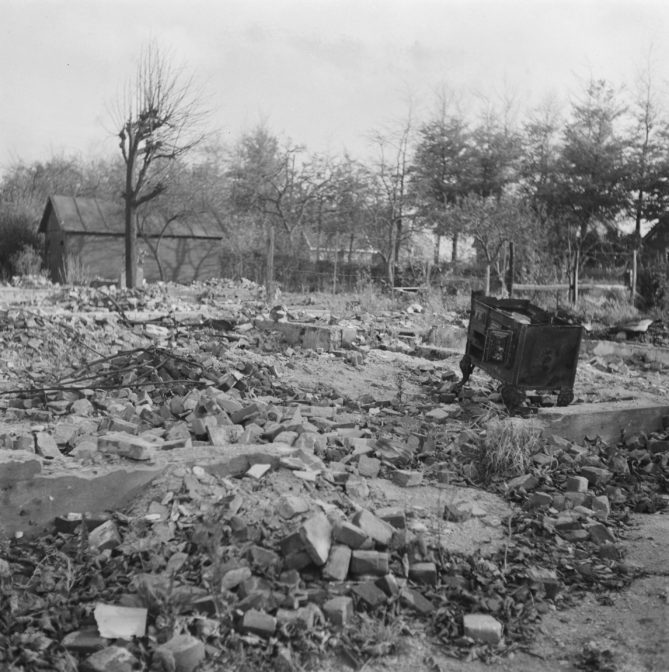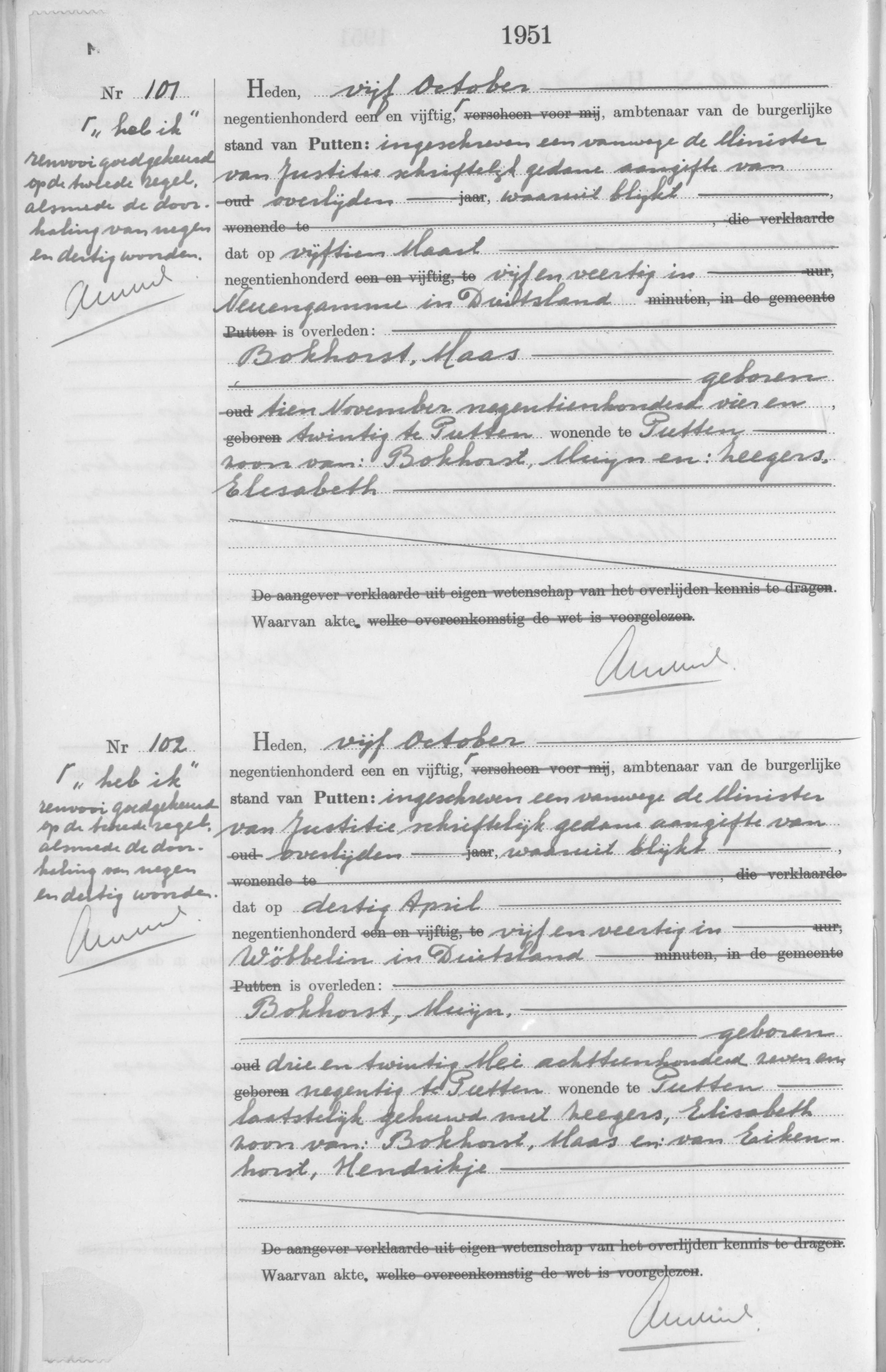Volunteers who are indexing 1950s death records from Gelderland have come across several records relating to the deportation of a large part of the male population in Putten during World War II. The Gelders Archief published a blog post about the find. Here is an English translation of the article (with permission).
Volunteers find death records of victims of Putten raid
On 2 October 1944, the German occupiers arrested 659 men between the ages of eighteen and fifty in Putten in Gelderland. This was almost the entire male population of the town. The men were transported to concentration camps. Seven other men were immediately shot and killed by the Germans. Over a hundred houses were burned. This event, 73 years ago today, has become known as the “Razzia van Putten” [Putten Raid].
The raid was a brutal retaliation by the occupier for the attack that the Dutch resistance had committed a day before on a car with German soldiers. The occupier first brought the arrested men to Camp Amersfoort and later to Neuengamme and other concentation camps. After the war, only 48 survivors returned. Five of them died shortly after their return as the result of exhaustion and wounds.

Destruction in Putten. Credits: Theo van Haren Noman, collection Nationaal Archief (public domain)
Volunteers of the crowd sourcing project “Met Oprechte Deelneming” [With Sincere Condoleances] of the Gelders Archief are indexing some of the death records of the victims.
Volunteer project
Volunteers participating in the project, that started on 15 June, are indexing all the Gelderland death records from the period 1951-1960. Some of these records involve people who died outside the Netherlands during World War II. This includes many records of victims of the raid.
It may seem unusual that so many death records turn up so many years later, but that was pretty common for the early 1950s. Project manager Anthony Livius: “After World War II, about half a million people were missing from the Netherlands. The Red Cross was asked to trace these people. In the following years, this organization collected information about Dutch people who died in other countries (often in concentration camps). Based on this information, the victims were officially pronounced dead, and then recorded by the Dutch municipalities in a death record. The record mentions the date and place of the death (for example Oświęcim – Polish for Auschwitz). A large part of these records were created at the end of the 1940s. These are already available online. With our current project, we can make the database more complete.
Impressive
Volunteers of the project indicated that they were deeply impressed by these kinds of records. They left messages on the project forum such as “Now and then you get cold shivers when you read all these names,” and “I become so emotional that I log off and continue later. I have never been this close to World War II.”
One volunteer came across two records on the same page (see photo) of a father and son who were both arrested during the razzia. Bricklayer Muijn Bockhorst (age 47) died in camp Wöbbelin on 30 April 1945. His nineteen-year-old son Maas Bockhorst, a baker by trade, died a month earlier on 15 March 1945 in camp Neuengamme. These are just two examples of the over 125 records of war victims that can be found in the Putten death registers of 1951 and 1952.

Digitally available
Soon, these and all other Gelderland death records from the 1950s will become available digitally for the first time on our [Gelders Archief] website. A volunteer wrote: “Indexing and digitizing all this data and making is accessible, must have a great value for the relatives of the deceased.”
The website of the Stichting Oktober 44 [October 44 Foundation] has more information about the Puttense razzia and the deported men.
Source
“Vrijwilligers stuiten op overlijdensakten slachtoffers Puttense razzia,” Gelders Archief (https://www.geldersarchief.nl/over-ons/actueel/weblog/236-vrijwilligers-stuiten-overlijdensakten-slachtoffers-puttense-razzia : accessed 2 October 2017).
More information
- List of deported men, including photos and scans of original records (Stichting Oktober 44)
- Putten Raid (Wikipedia)
- The Raid (Municipality of Putten)
- Persons database of indexed records at Gelders Archief, including death records 1811-1950.


I shared the story of the raid on Putten today with another person. My mothers brother Alte Arendse was one of the survivors and lived into his 80’s. Many of my relatives died as a result of the raid on Putten. My Parents immigrated to Australia in the early 50’s and rarely spoke of the war years. I have a book called Putten 1944 that has all the photos and details of those who died and survived. I have been on several visits to the Netherlands and have visited the memorial.
Hello Aart Mosterd, My family also lives in Autralia since 1973. We are in fact related because Willempje Mosterd married cornelis van de Flier who married a van’t Klaphek. Currently am busy piecing together a family tree for my mother Anna Geertruida van’t Klaphek; she used to live on the Diermenseweg op Klein Bokhorst. she lost a cousin, Geurt van’t Klaphek in the razzia, but his brother Cornelis jumped off the train with some others, incl Barend Wallet die ook getrouwd was with a van’t Klaphek. My grandmother was Hendrika van Ramshorst.
a few years ago we visited Holland and my aunt talked about the women and children being in the church when all this mayhem was happening. whilst doing my tree I’ve come across many who were also taken and related as well. A heartbreaking story,that is still keenly felt because a whole generation of men disappeared from Putten. We live in South Gippsland in Victoria(3953), if you reply to my email I can invite you to the family ancestry. Most of Putten makes its appearance. I have seen a copy but don’t own one.